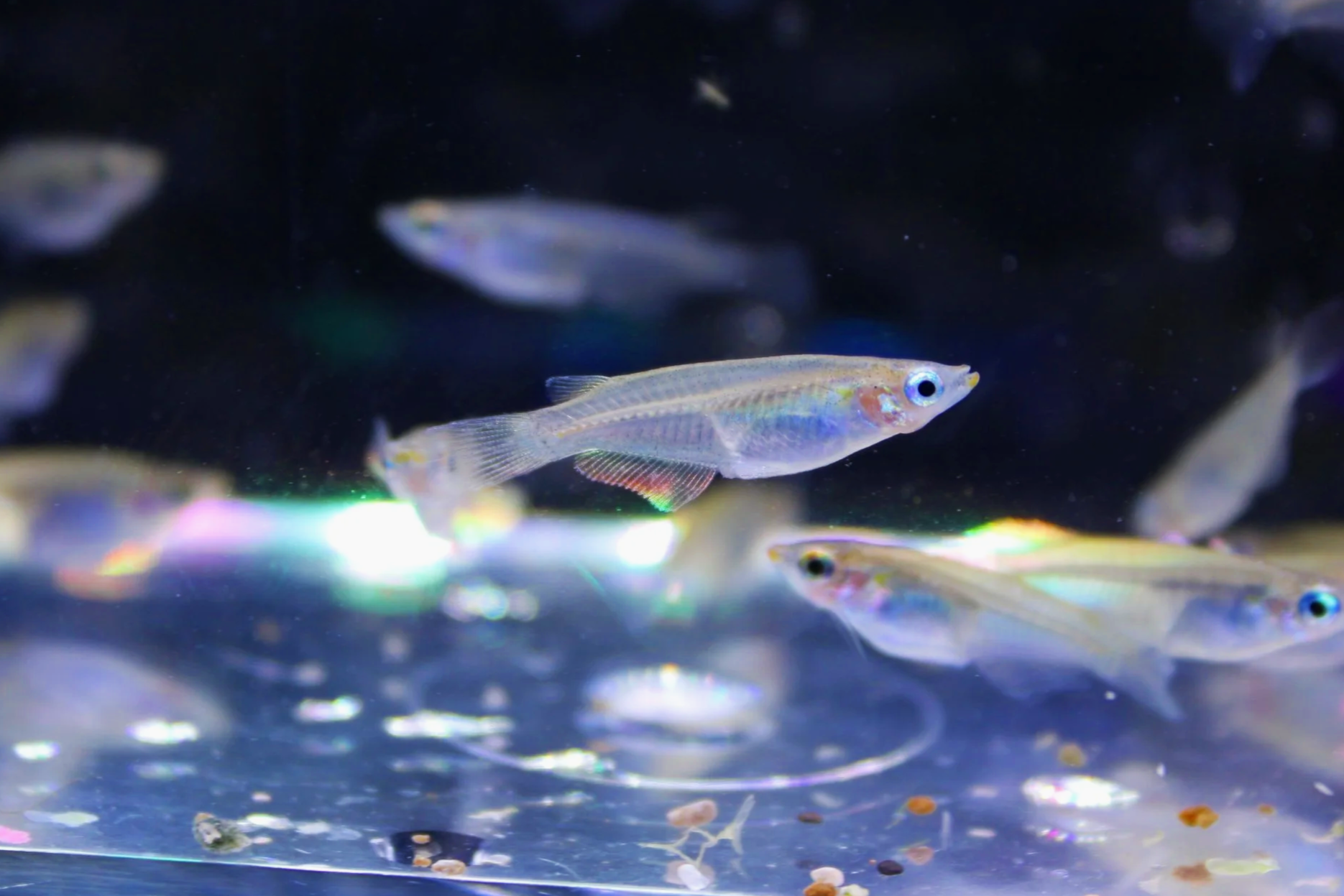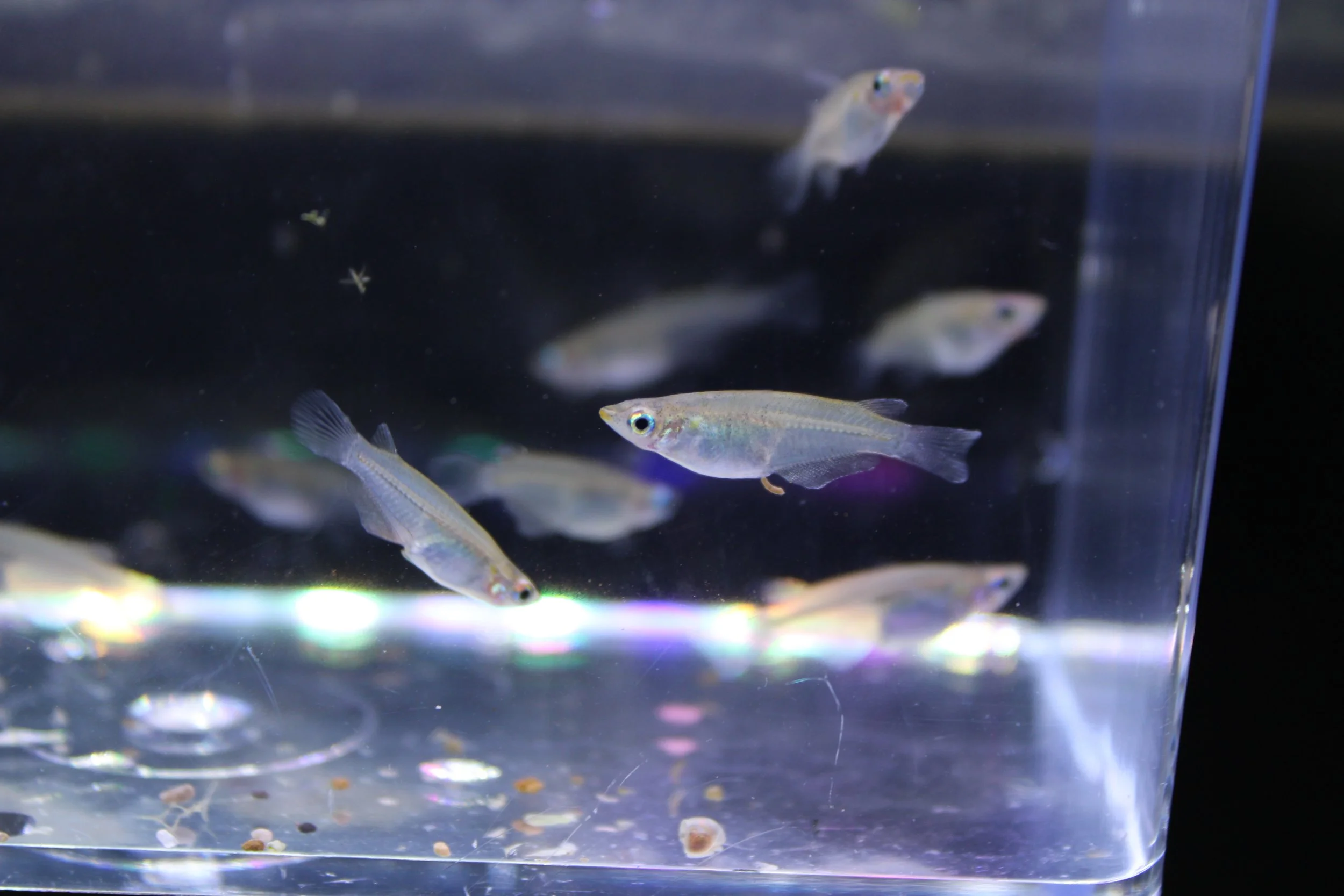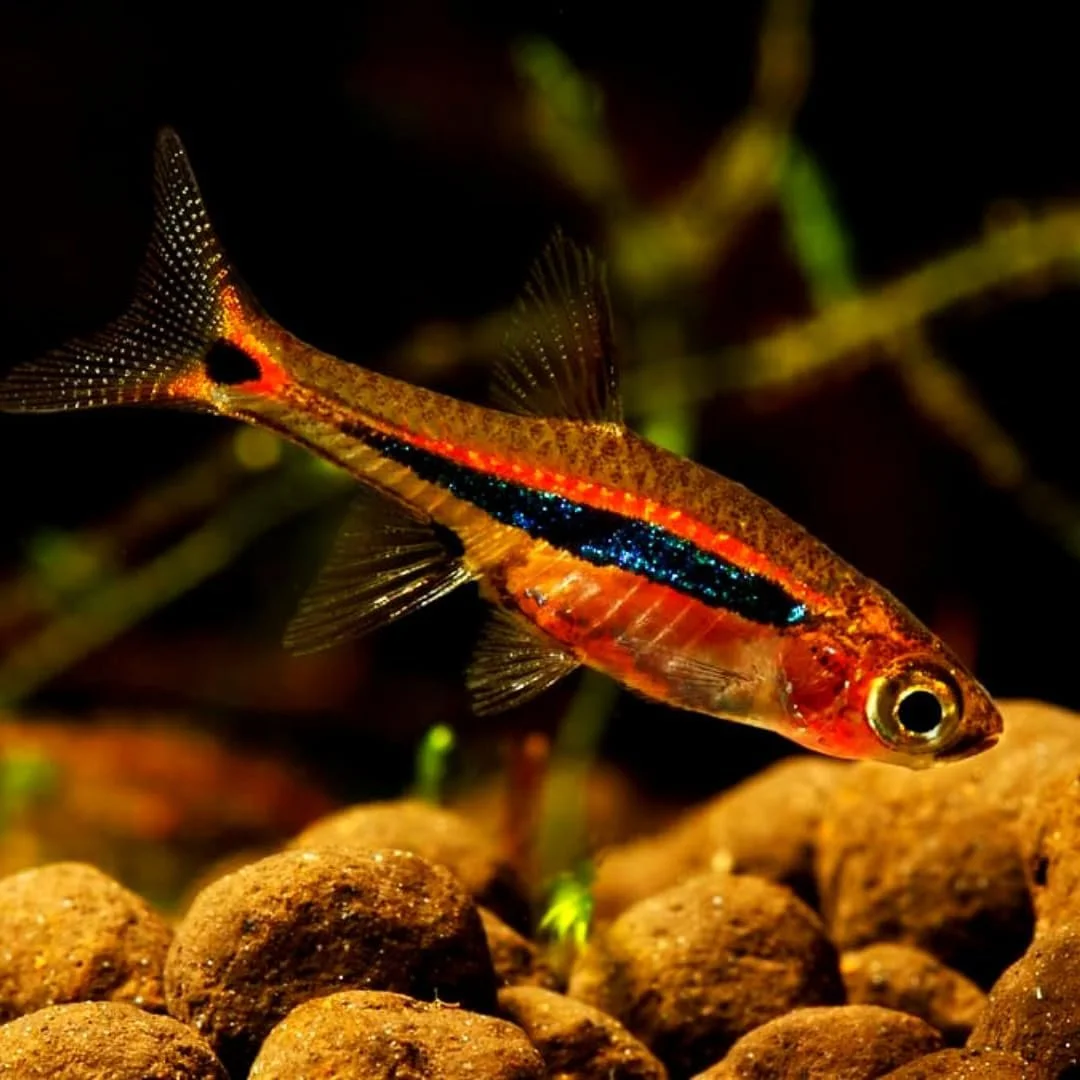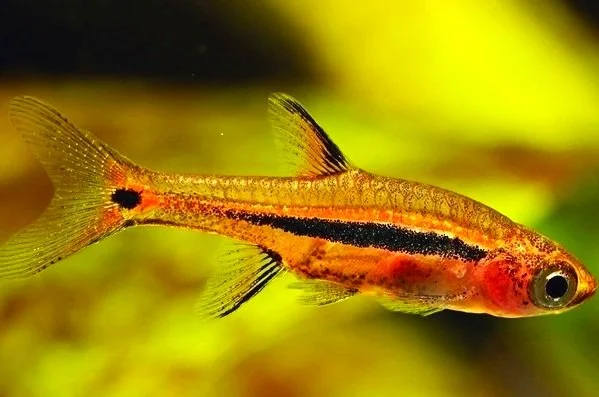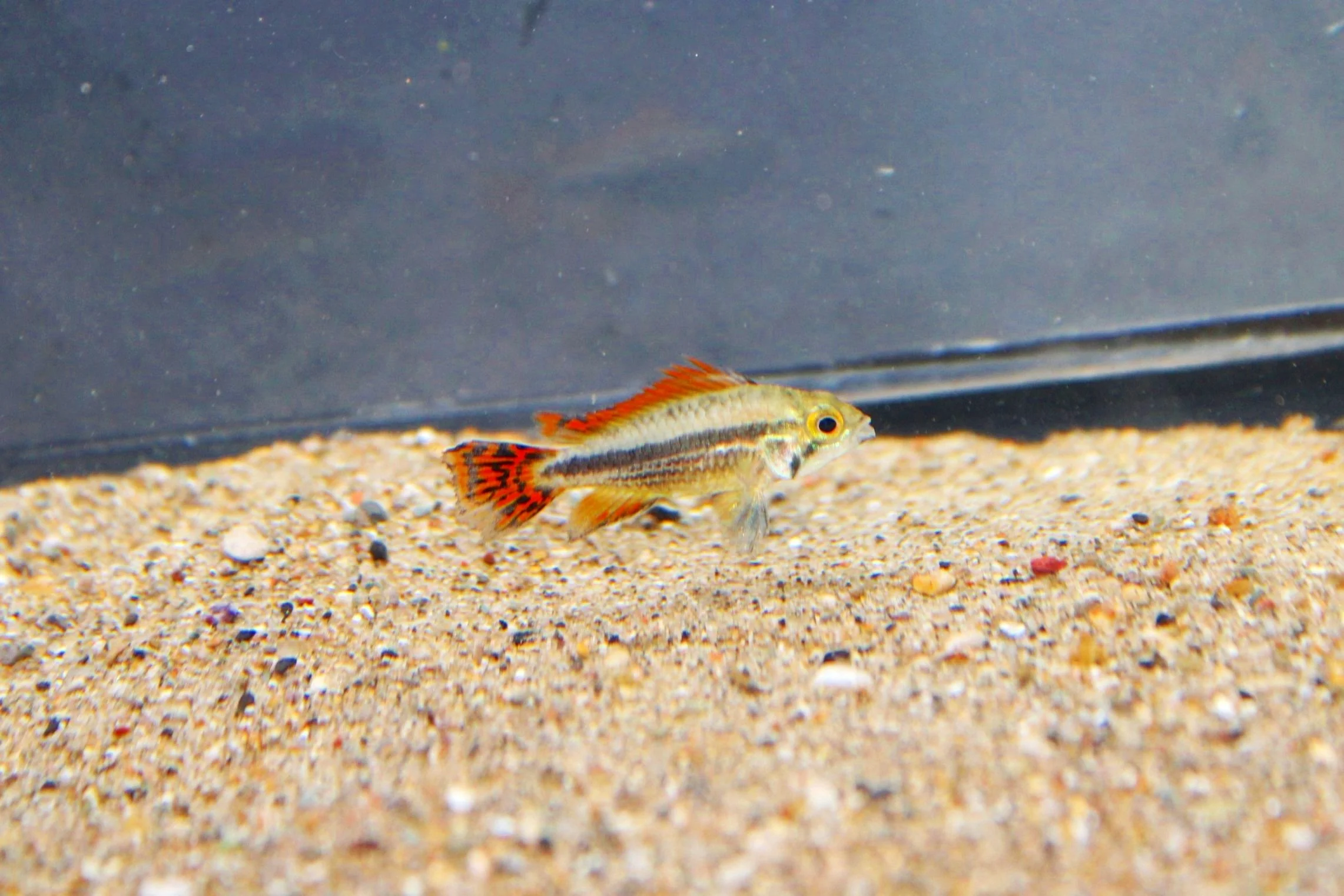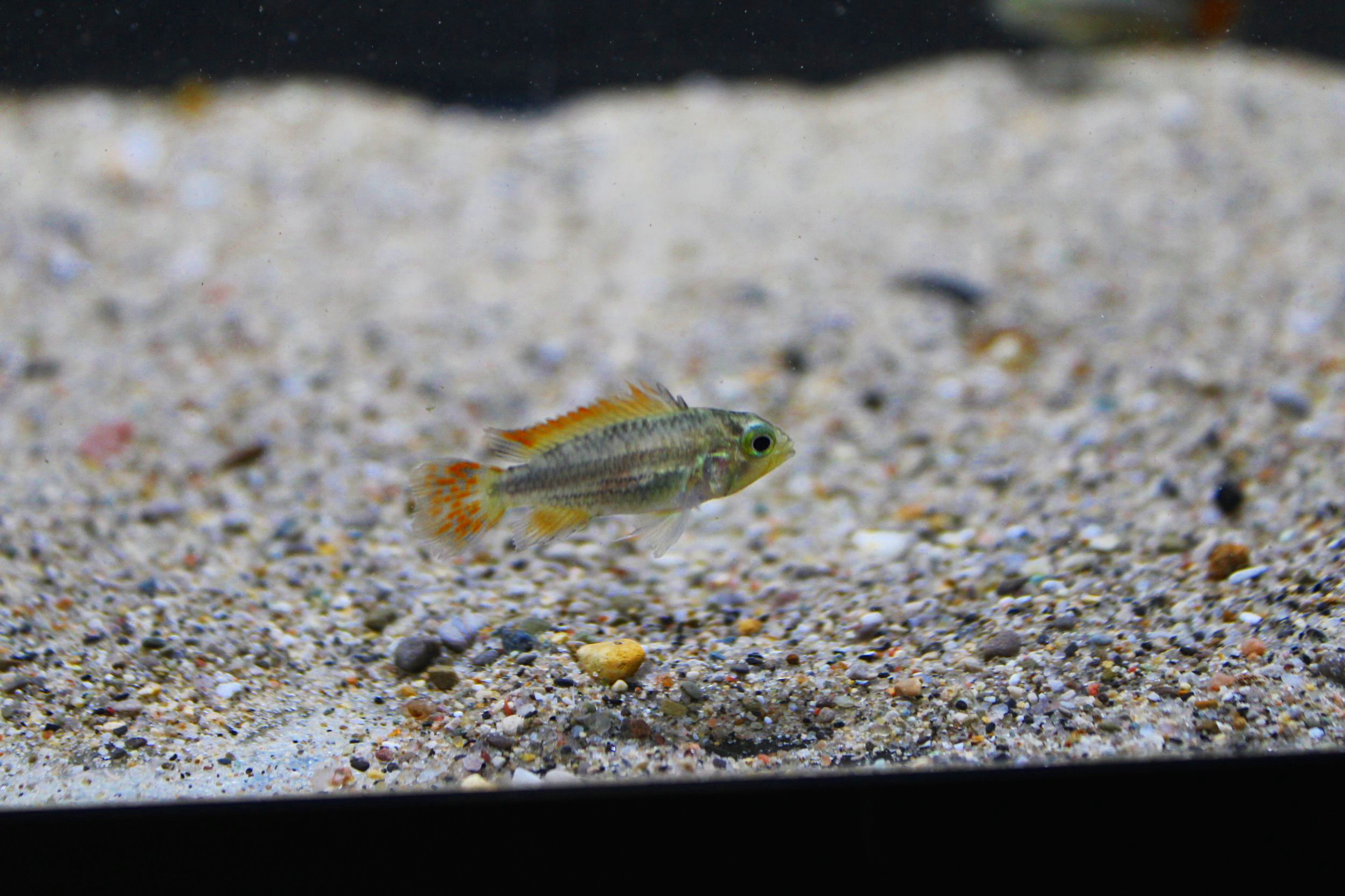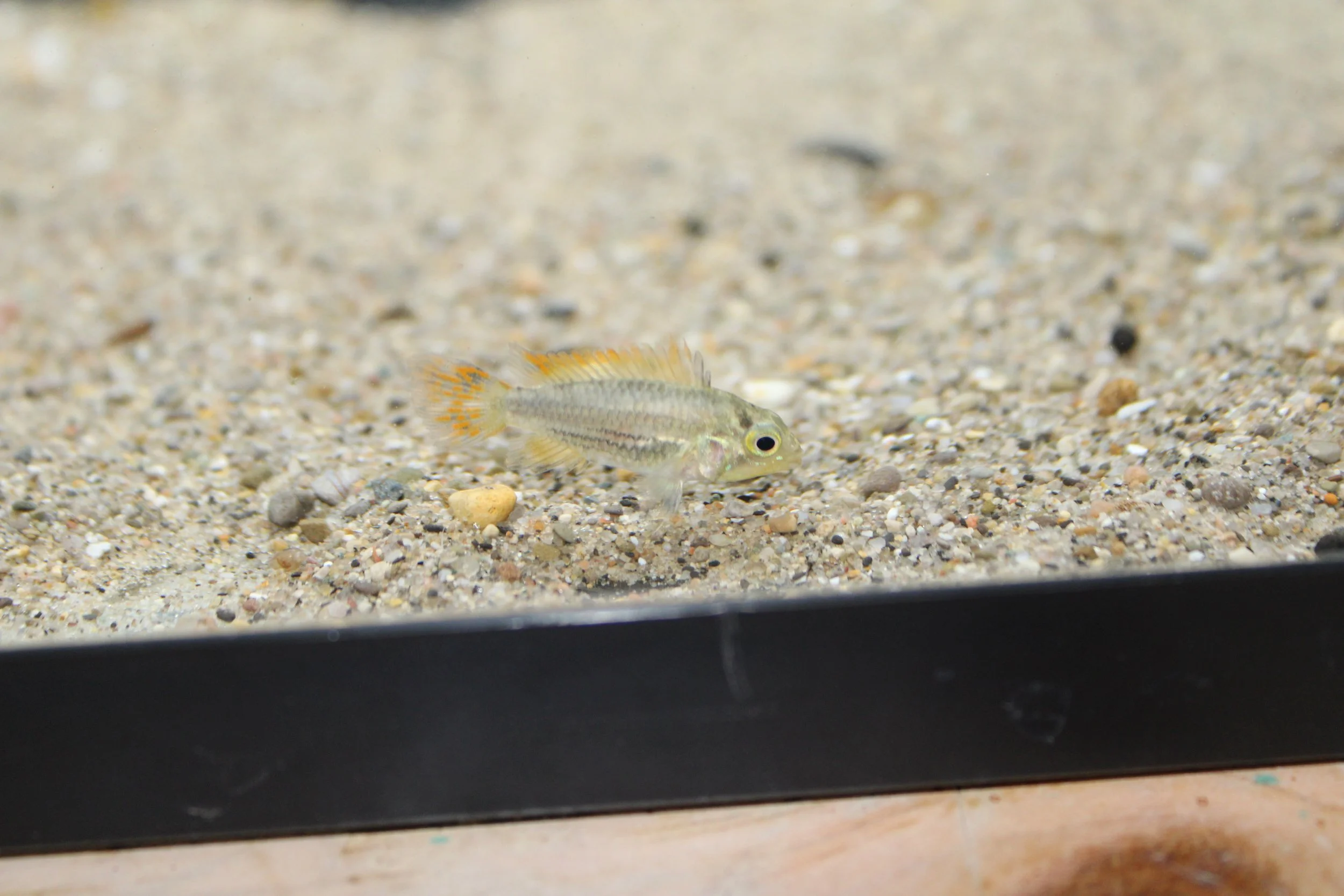 Image 1 of 8
Image 1 of 8

 Image 2 of 8
Image 2 of 8

 Image 3 of 8
Image 3 of 8

 Image 4 of 8
Image 4 of 8

 Image 5 of 8
Image 5 of 8

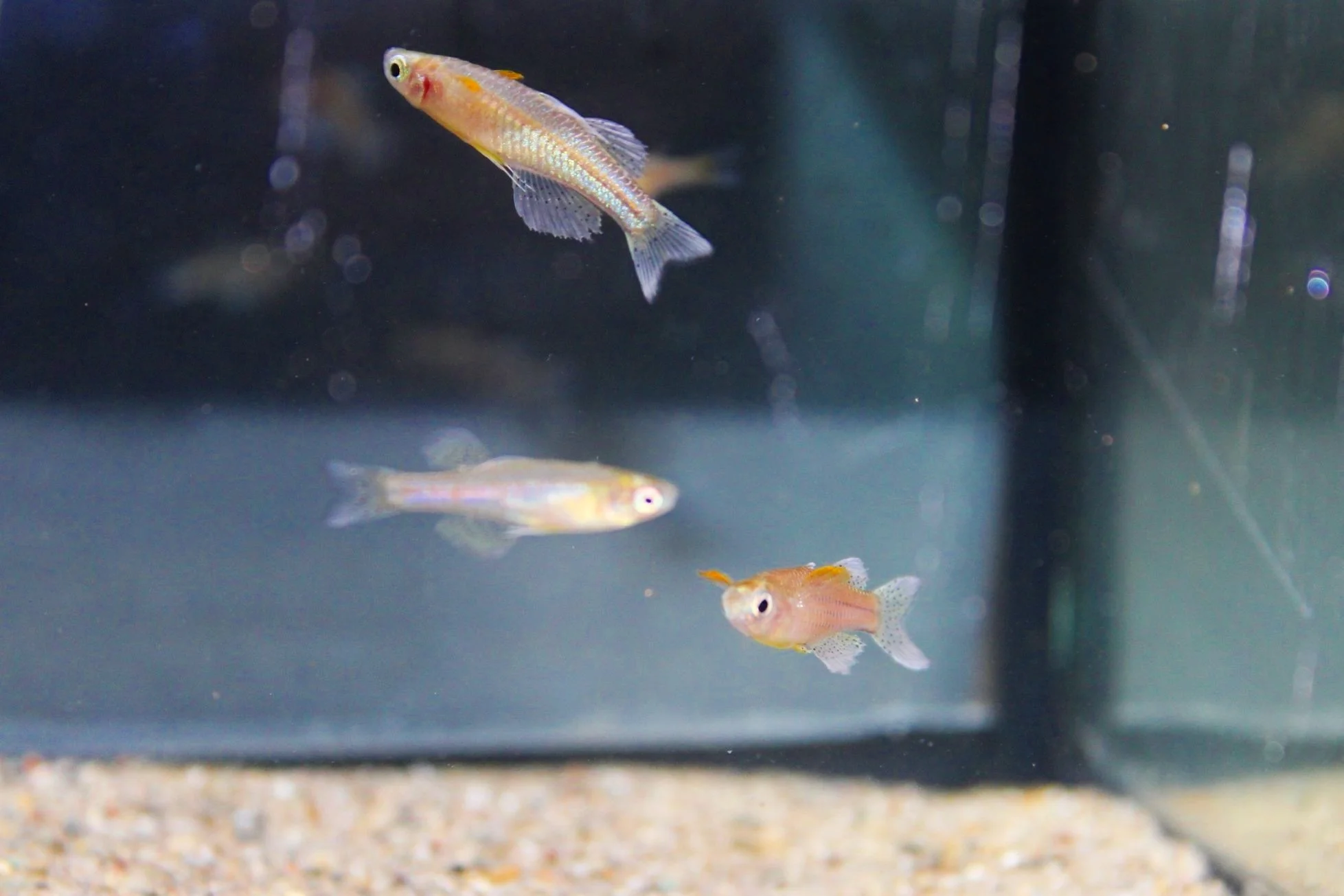 Image 6 of 8
Image 6 of 8

 Image 7 of 8
Image 7 of 8

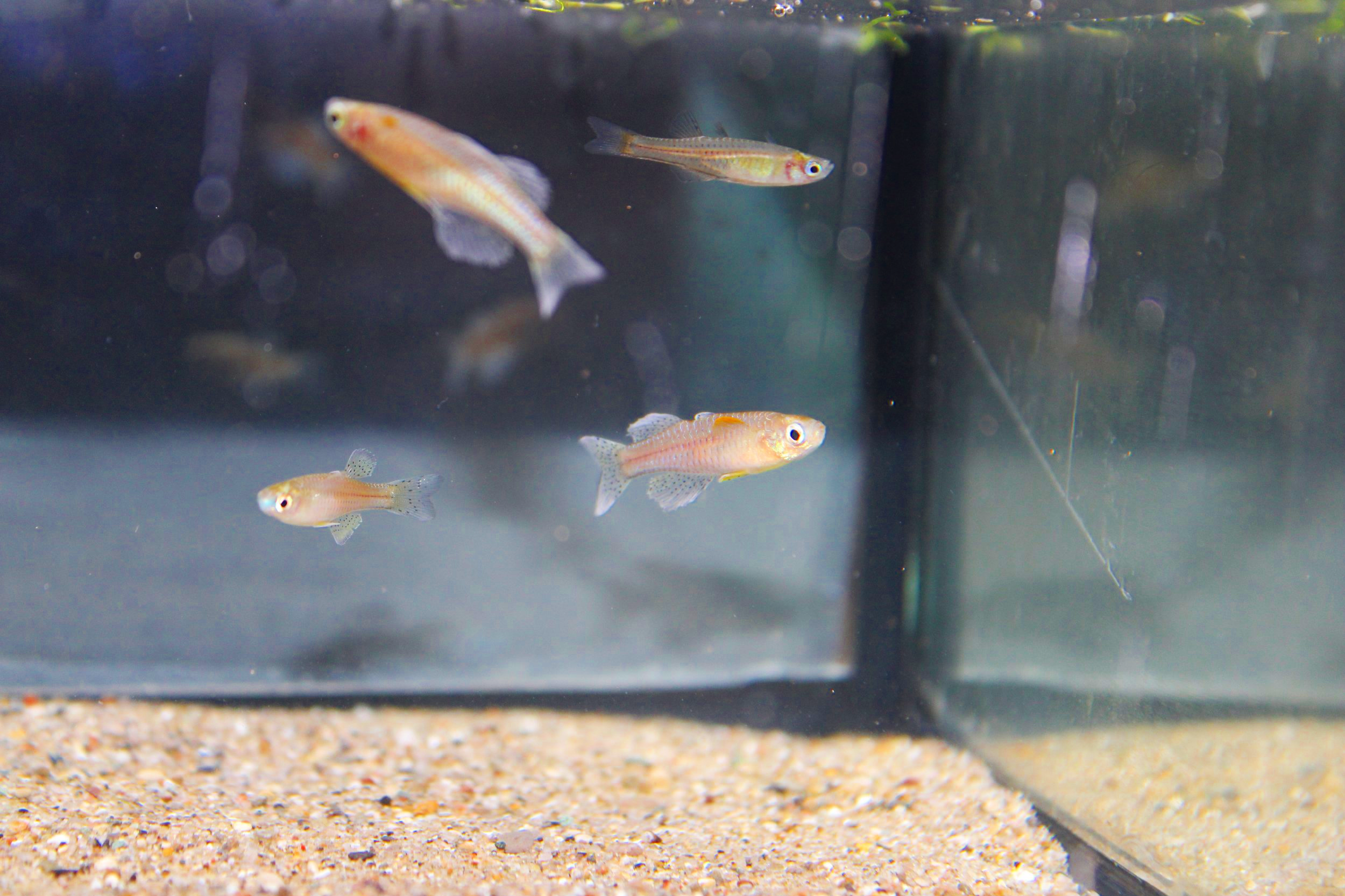 Image 8 of 8
Image 8 of 8









Spotted Blue Eye Rainbowfish
Add movement and shimmer to your aquarium with the Spotted Blue Eye Rainbowfish, also known as Pseudomugil gertrudae. These captivating nano fish display iridescent sky-blue eyes, transparent fins speckled with black dots, and subtle golden-yellow body hues that glow in the right lighting. Small but lively, they are perfect for nano and planted aquariums, especially in peaceful community setups.
Our Spotted Blue Eyes are tank-raised, healthy, and acclimated to a wide range of water conditions. They ship at approximately 0.5–0.75 inches, and mature to about 1–1.25 inches.
Key Features:
Species: Pseudomugil gertrudae
Common Name: Spotted Blue Eye Rainbowfish
Size Shipped: ~0.5–0.75” juveniles
Adult Size: ~1–1.25 inches
Temperament: Peaceful, active
Schooling Fish: Best kept in groups of 6+
Lifespan: 2–3 years
Swimming Level: Top to mid-water
Origin: Tank-raised (not wild-caught)
Ideal Tank Parameters:
Temperature: 72°F – 80°F (22°C – 27°C)
pH: 6.0 – 7.5
GH: 4 – 10
KH: 1 – 5
Tank Size: Minimum 10 gallons (20+ gallons recommended for groups)
Decor: Heavily planted with open swimming space
Filtration: Gentle flow preferred
Why Choose Spotted Blue Eye Rainbowfish?
✔ Striking Iridescent Blue Eyes – Glow under tank lighting
✔ Nano-Sized – Perfect for small or planted tanks
✔ Peaceful and Community-Friendly
✔ Active Swimmers – Provide constant motion and interest
✔ Excellent Compatibility with Shrimp and Small Peaceful Species
Care Tips:
These fish thrive in planted tanks with soft, clean, and stable water conditions. Keep in schools of at least 6–10 individuals for natural social behavior and reduced stress. A darker substrate and floating plants help enhance their color and confidence.
Tankmates:
Other small rainbowfish (Forktail, Signifer, etc.)
Pygmy Corydoras, Otocinclus
Neocaridina shrimp (if well-established)
Peaceful micro rasboras or ricefish
Avoid large or nippy fish
Diet:
High-quality micro pellets (like Hikari Micro or Bug Bites)
Live or frozen foods: baby brine shrimp, daphnia, microworms
Occasional flake foods or gel-based diets
Feed 1–2 times daily in small amounts
Add movement and shimmer to your aquarium with the Spotted Blue Eye Rainbowfish, also known as Pseudomugil gertrudae. These captivating nano fish display iridescent sky-blue eyes, transparent fins speckled with black dots, and subtle golden-yellow body hues that glow in the right lighting. Small but lively, they are perfect for nano and planted aquariums, especially in peaceful community setups.
Our Spotted Blue Eyes are tank-raised, healthy, and acclimated to a wide range of water conditions. They ship at approximately 0.5–0.75 inches, and mature to about 1–1.25 inches.
Key Features:
Species: Pseudomugil gertrudae
Common Name: Spotted Blue Eye Rainbowfish
Size Shipped: ~0.5–0.75” juveniles
Adult Size: ~1–1.25 inches
Temperament: Peaceful, active
Schooling Fish: Best kept in groups of 6+
Lifespan: 2–3 years
Swimming Level: Top to mid-water
Origin: Tank-raised (not wild-caught)
Ideal Tank Parameters:
Temperature: 72°F – 80°F (22°C – 27°C)
pH: 6.0 – 7.5
GH: 4 – 10
KH: 1 – 5
Tank Size: Minimum 10 gallons (20+ gallons recommended for groups)
Decor: Heavily planted with open swimming space
Filtration: Gentle flow preferred
Why Choose Spotted Blue Eye Rainbowfish?
✔ Striking Iridescent Blue Eyes – Glow under tank lighting
✔ Nano-Sized – Perfect for small or planted tanks
✔ Peaceful and Community-Friendly
✔ Active Swimmers – Provide constant motion and interest
✔ Excellent Compatibility with Shrimp and Small Peaceful Species
Care Tips:
These fish thrive in planted tanks with soft, clean, and stable water conditions. Keep in schools of at least 6–10 individuals for natural social behavior and reduced stress. A darker substrate and floating plants help enhance their color and confidence.
Tankmates:
Other small rainbowfish (Forktail, Signifer, etc.)
Pygmy Corydoras, Otocinclus
Neocaridina shrimp (if well-established)
Peaceful micro rasboras or ricefish
Avoid large or nippy fish
Diet:
High-quality micro pellets (like Hikari Micro or Bug Bites)
Live or frozen foods: baby brine shrimp, daphnia, microworms
Occasional flake foods or gel-based diets
Feed 1–2 times daily in small amounts




